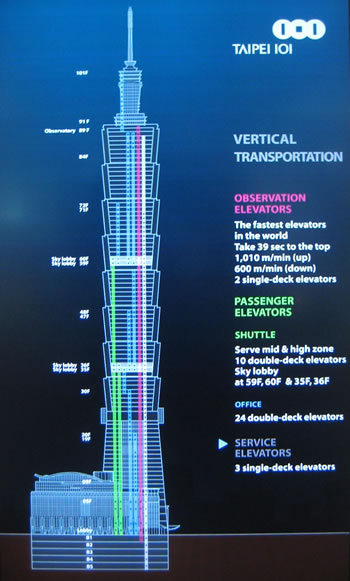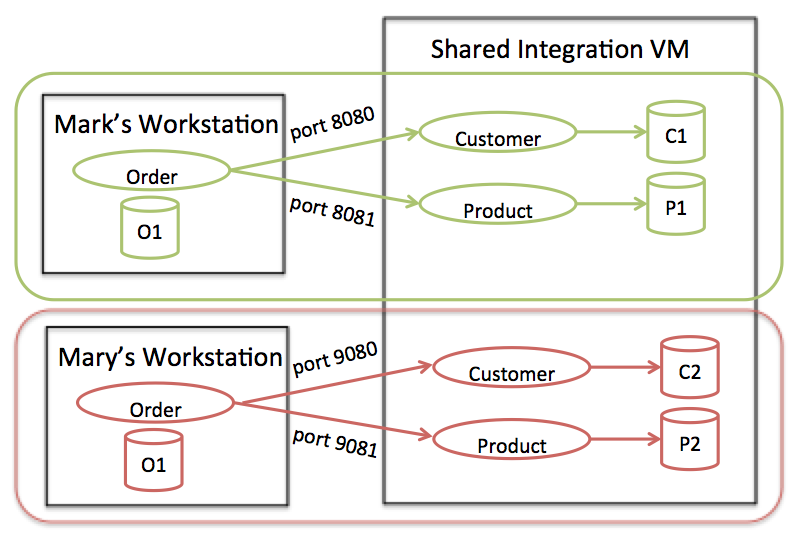tagged by: enterprise architecture
Products Over Projects
Software projects are a popular way of funding and organizing software development. They organize work into temporary, build-only teams and are funded with specific benefits projected in a business case. Product-mode instead uses durable, ideate-build-run teams working on a persistent business issue. Product-mode allows teams to reorient quickly, reduces their end-to-end cycle time, and allows validation of actual benefits by using short-cycle iterations while maintaining the architectural integrity of their software to preserve their long-term effectiveness.
Patterns of Legacy Displacement

When faced with the need to replace existing software systems, organizations often fall into a cycle of half-completed technology replacements. Our experiences have taught us a series of patterns that allow us to break this cycle, relying on: a deliberate recognition of the desired outcomes of displacing the legacy software, breaking this displacement in parts, incrementally delivering these parts, and changing the culture of the organization to recognize that change is the unvarying reality.
Creating an integrated business and technology strategy

To make fruitful use of technology, we need to align our technology thinking with underlying business plans. A technology strategy can drive this alignment, providing it properly integrates business and technology. We have developed a conceptual framework to help us with this strategic thinking, based on recognizing common aspects of strategic initiatives, leading us to identify eleven prevalent strategic directions. For each direction we outline the key business questions that they raise, and the investigations that we need to do to explore the technology implications. We've found that this framework leads not just to more effective technology strategies, but allows technology to inform business thinking, developing new revenue streams.
The strong and weak forces of architecture

Good technical design decisions are very dependent on context. Teams that regularly work together on common goals are able to communicate regularly and negotiate changes quickly. These teams exhibit a strong force of alignment, and can make technology and design decisions that harness that strong force. As we zoom out in a larger organisation an increasingly weak force exists between teams and divisions that work independently and have less frequent collaboration. Recognising the differences in these strong and weak forces allows us to make better decisions and give better guidance for each level, allowing for more empowered teams that can move faster.
Scaling the Practice of Architecture, Conversationally

Architecture need not be a monologue; delivered top-down from the minds and mouths of a centralised few. This article describes another way to do architecture; as a series of conversations, driven by a decentralised and empowering decision-making technique, and supported by four learning and alignment mechanisms: Decision Records, Advisory Forum, Team-sourced Principles, and a Technology Radar
Linking Modular Architecture to Development Teams

Can a modular architecture improve software delivery? Yes! -but with some caveats. This article charts the journey of an enterprise who set out to shift their architecture to a more modular one in order to ease their growing pains. They found that modularity is a multifaceted solution that extends beyond architecture, into business lines of communication, team topologies and effective developer experience. By paying close attention to these factors, the enterprise was able to achieve significant uplifts in the delivery performance of their mobile applications.
Decentralizing the Practice of Architecture at Xapo Bank
Xapo was founded as a Bitcoin service provider and developed into an online bank. During this transition it needed to reassess its software estate and establish an architecture capability to guide its future. It took on ideas from Domain-Driven Design, Team Topologies, and the Architecture Advice Process to develop an Architectural Advice Forum. This led to greater alignment of its software delivery teams, and a coherent technology strategy.
You Can't Buy Integration

Commercial integration tools are a couple decades old now, but there has been little in the way of overarching architectural principles describing when and how to use them. In this article, I argue that “buy” decision mechanics have caused us to exaggerate the value proposition of such tools, often leading to mandates to use a certain integration tool over a general purpose language. I claim that such tools thrive in a world that views integration as primarily about connecting systems, but that digital organizations have reimagined integration to be primarily about putting clean interfaces in front of digital capabilities, emphasizing capabilities over systems. Finally, I list some of the key principles behind a modern view of integration and claim they are best managed with a general purpose language, reorienting the primary value proposition of commercial integration tools towards simplifying tactical implementation concerns.
Building Infrastructure Platforms
Infrastructure Platform teams enable organisations to scale delivery by solving common product and non-functional requirements with resilient solutions. This allows other teams to focus on building their own things and releasing value for their users. But nobody said building scalable platforms was easy... In this article Poppy and Chris explore 7 key principles which can help you build the right thing right. Spoiler: don't skip strategy, user experience and research.
Compliance in a DevOps Culture

Integrating the necessary Security Controls and Audit capabilities to satisfy Compliance requirements within a DevOps culture can capitalize on CI/CD pipeline automation, but presents unique challenges as an organization scales. Understanding the second order implications and unintended consequences caused by the chosen implementation is key to building an effective, secure, and scalable solution.
The Role of an Enterprise Architect in a Lean Enterprise

When an organization takes on an agile mindset, enterprise architecture doesn't go away, but the role of enterprise architects changes. Enterprise Architects no longer make choices, but help others make the right choice and then radiate that information. Enterprise Architects still need to form a vision, but then need to build bridges between teams to build communities of learning. These will allow teams to explore new approaches and learn from each other, with Enterprise Architects as partners in that growth.
The Elephant in the Architecture
We, and our colleagues, are often called on to perform architectural assessments for our clients. When we do this, the architects involved with these systems will talk about the performance of these systems, how resilient they are to faults, and how they are designed to evolve to easily support new capabilities. The elephant that rarely comes up, however, is how different systems contribute to business value, and how this value interacts with these other architectural attributes.
The Architect Elevator — Visiting the upper floors

Many large organizations see their IT engine separated by many floors from the executive penthouse, which also separates business and digital strategy from the vital work of carrying it out. The primary role of an architect is to ride the elevators between the penthouse and engine room, stopping wherever is needed to support these digital efforts: automating software manufacturing, minimizing up-front decision making, and influencing the organization alongside technology evolution.
Don't get locked up into avoiding lock-in

A significant share of architectural energy is spent on reducing or avoiding lock-in. That's a rather noble objective: architecture is meant to give us options and lock-in does the opposite. However, lock-in isn't a simple true-or-false matter: avoiding being locked into one aspect often locks you into another. Also, popular notions, such as open source automagically eliminating lock-in, turn out to be not entirely true. Time to have a closer look at lock-in, so you don't get locked up into avoiding it!
Enterprise Integration Using REST

Most internal REST APIs are one-off APIs purpose built for a single integration point. In this article, I'll discuss the constraints and flexibility that you have with nonpublic APIs, and lessons learned from doing large scale RESTful integration across multiple teams.
How to manage a program in a product-mode organization

In their ideal state, product-mode organizations are formed of loosely coupled, autonomous teams that respond rapidly to articulated and unarticulated user needs. On occasion however, opportunities arise that require a response involving coordination across multiple teams. If not managed effectively the outcome will result in missed revenue, unsatisfied customers and wasted team capacity. We refer to the organizational initiatives that respond to these opportunities as programs. In this article, we’ll share our experience managing programs in product-mode organizations through an example of a program gone bad.
Product-Service Partnerships
When customer companies buy software products, they usually need skilled staff to install them. This staff is usually provided by a service provider company, since software product vendors don't find it makes business sense to build their own services arm. Customers need to be aware of the relationship between product vendors and service providers, and should require transparency on the relationship from those they work with. A transparency that is increasingly important as these partnerships grow in prominence with the rise of cloud vendors.
Enterprise Architects Join the Team

Enterprise Architecture groups often get separated from day to day development. This can lead to their knowledge of development work getting out of date and development teams not taking a broad company-wide perspective. Having seen this happen frequently my colleague (Thoughtworks CTO) Rebecca argues that enterprise architects can be much more effective by joining development teams.
Agilists and Architects: Allies not Adversaries
At QCon San Francisco 2008 Rebecca Parsons and I gave a talk about how agile approaches work with enterprise architecture groups. At the moment there's a lot of distrust and conflict between agile project teams and architecture groups. We dig into why this is so, and explore ways that these groups can work together.
Foreword to Building Evolutionary Architectures

Recently my colleagues: Neal Ford, Rebecca Parsons, and Pat Kua, wrote a book entitled “Building Evolutionary Architectures”. I was honored that they asked me to write the foreword.
How to Move Beyond a Monolithic Data Lake to a Distributed Data Mesh

Many enterprises are investing in their next generation data lake, with the hope of democratizing data at scale to provide business insights and ultimately make automated intelligent decisions. Data platforms based on the data lake architecture have common failure modes that lead to unfulfilled promises at scale. To address these failure modes we need to shift from the centralized paradigm of a lake, or its predecessor data warehouse. We need to shift to a paradigm that draws from modern distributed architecture: considering domains as the first class concern, applying platform thinking to create self-serve data infrastructure, and treating data as a product.
Reckoning with the force of Conway's Law
Conway's Law (formulated in 1968 by Melvin Conway) says that a system's design is constrained by the communication patterns of its designers. Birgitta, Mike, James, and I discuss the meaning of this principle and how we've seen it play out in our careers. We talk about its impact on the concept of Microservices, the importance of aligning with business capabilities, and the role of the inverse Conway maneuver.
Application Boundary
One of the undecided problems of software development is deciding what the boundaries of a piece of software is. (Is a browser part of an operating system or not?) Many proponents of Service Oriented Architecture believe that applications are going away - thus future enterprise software development will be about assembling services together.
I don't think applications are going away for the same reasons why application boundaries are so hard to draw. Essentially applications are social constructions:
Conway's Law

Pretty much all the practitioners I favor in Software Architecture are deeply suspicious of any kind of general law in the field. Good software architecture is very context-specific, analyzing trade-offs that resolve differently across a wide range of environments. But if there is one thing they all agree on, it's the importance and power of Conway's Law. Important enough to affect every system I've come across, and powerful enough that you're doomed to defeat if you try to fight it.
Default Trial Retire
Within each normal-sized team, limit the choice of alternatives for any class of technology to three. These are: the current sensible default, the one we're experimenting with as a trial, and the one that we hate and want to retire.
Enterprise Architecture
Just recently I've picked up a couple of bad reviews on Amazon for P of EAA because there is nothing in the book about enterprise architecture. Of course there's a good reason for that - the book is about enterprise application architecture, that is how to design enterprise applications. Enterprise architecture is a different topic, how to organize multiple applications in an enterprise into a coherent whole.
Service Oriented Ambiguity
Whenever Thoughtworks rashly lets me out in front of a client, one question I'm bound to be asked is “what do you think of SOA (Service Oriented Architecture)?” It's a question that's pretty much impossible to answer because SOA means so many different things to different people.
Team Topologies

Any large software effort, such as the software estate for a large company, requires a lot of people - and whenever you have a lot of people you have to figure out how to divide them into effective teams. Forming Business Capability Centric teams helps software efforts to be responsive to customers’ needs, but the range of skills required often overwhelms such teams. Team Topologies is a model for describing the organization of software development teams, developed by Matthew Skelton and Manuel Pais. It defines four forms of teams and three modes of team interactions. The model encourages healthy interactions that allow business-capability centric teams to flourish in their task of providing a steady flow of valuable software.
